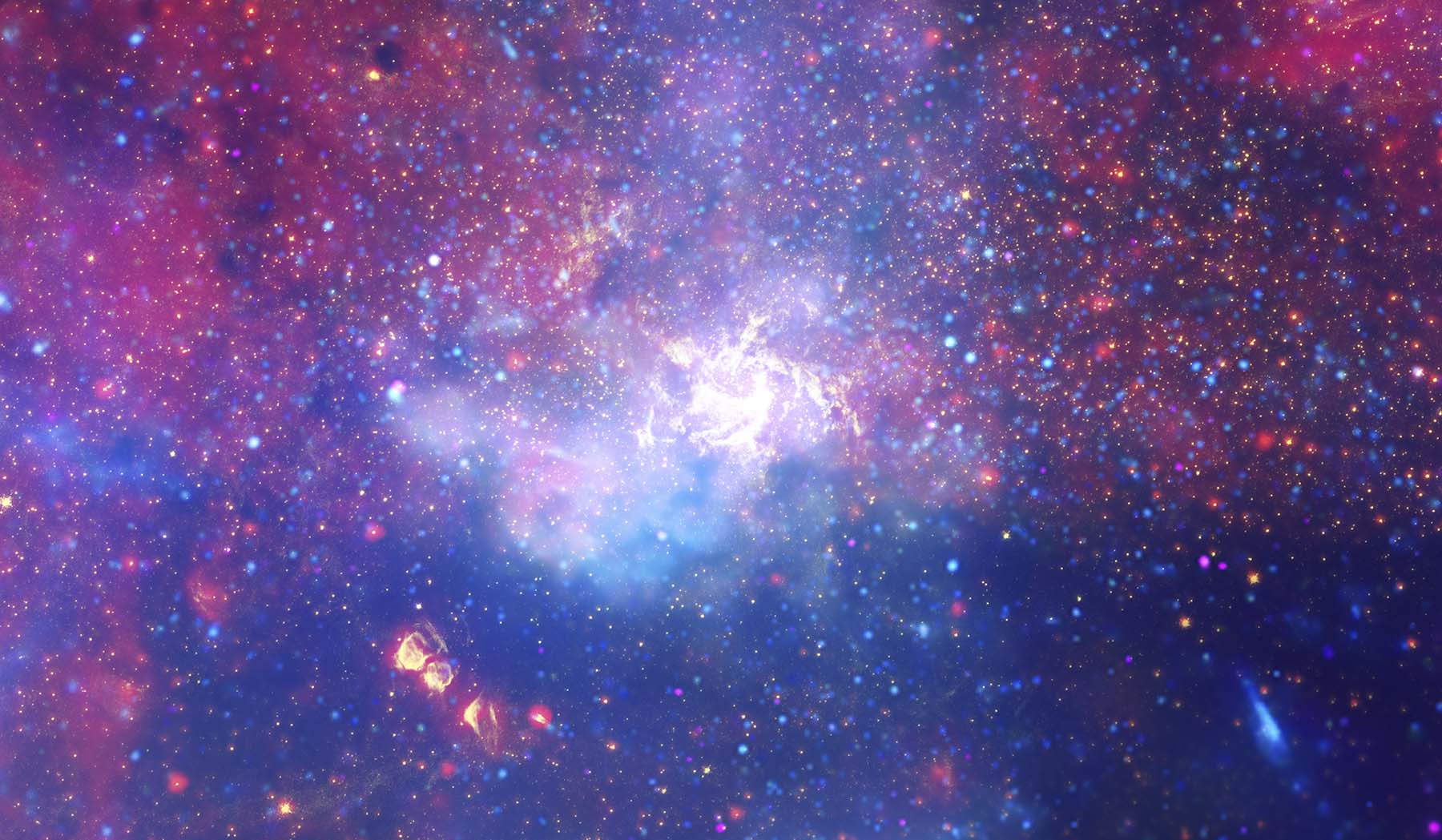STScI: NASA’s Webb Will Join Forces with the Event Horizon Telescope to Reveal the Milky Way’s Supermassive Black Hole

In the composite image shown here, colors represent different wavelengths of light. Hubble’s near-infrared observations are shown in yellow, revealing hundreds of thousands of stars, stellar nurseries, and heated gas. The deeper infrared observations of NASA’s Spitzer Space Telescope are shown in red, revealing even more stars and gas clouds. Light detected by NASA’s Chandra X-ray Observatory is shown in blue and violet, indicating where gas is heated to millions of degrees by stellar explosions and by outflows from the supermassive black hole. Credits: SCIENCE: NASA, ESA, SSC, CXC, STScI
Webb will tackle the challenge of the supermassive black hole’s puzzling flares, which have proved both intriguing and frustrating for astronomers.
In its first year of operations, NASA’s James Webb Space Telescope will join forces with a global collaborative effort to create an image of the area directly surrounding the supermassive black hole at the heart of our Milky Way galaxy. The Event Horizon Telescope (EHT) is famous for its first image of the “shadow” of the black hole at the core of galaxy M87, and it has now turned its efforts to the more complex environment of Sagittarius A*, the Milky Way’s supermassive black hole. While M87’s core presented a steady target, Sagittarius A* exhibits mysterious flickering flares on an hourly basis, which make the imaging process much more difficult. Webb will assist with its own infrared images of the black hole region, providing data about when flares are present that will be a valuable reference to the EHT team.
